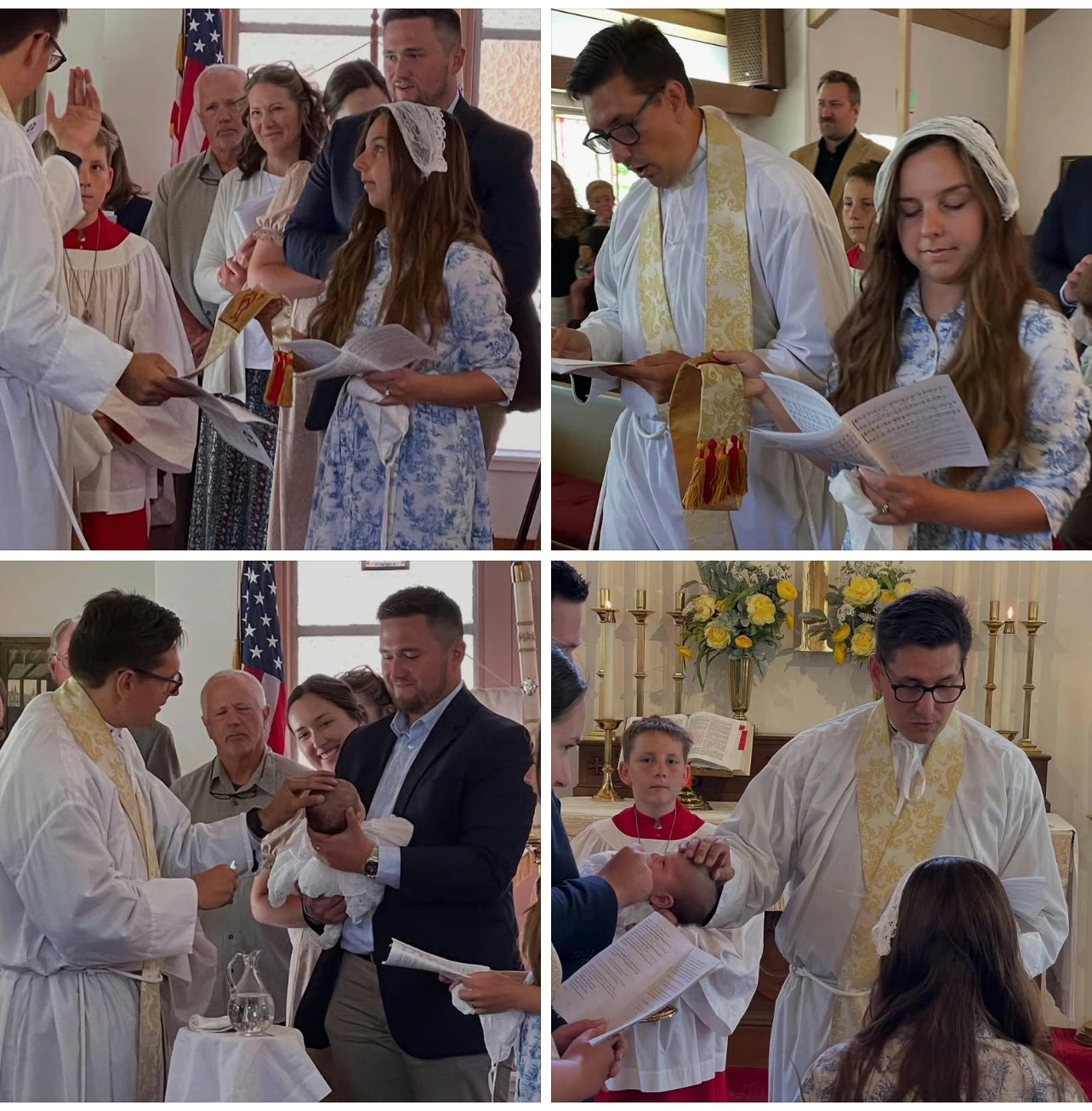Sunday at Saint Paul’s, we had the joy of “churching” a new mother, and it was such a beautiful reminder of how our Anglican tradition cherishes both birth of new covenant children and the vocation of motherhood. If you’ve never witnessed a churching service—or are curious about what it really means—here’s a friendly, Anglican (or, to be more precise, Reformed Episcopal) take on it.
What Is “Churching of Women”?
First things first: churching is not a “purification” rite—pregnancy is a normal physiological process & is never a pathology.
In 1988, Pope John Paul II said it beautifully:
“Motherhood involves a special communion with the mystery of life, as it develops in the woman’s womb. The mother is filled with wonder at this mystery of life, and “understands” with unique intuition what is happening inside her. In the light of the “beginning”, the mother accepts and loves as a person the child she is carrying in her womb.” (Mulieris Dignitatem)
At its heart, it’s a ceremony of thanksgiving that welcomed a new mother back to church. In the Prayerbook is it also called, “The Thanksgiving of Women after Child-birth” Childbirth was once much more dangerous for both mother and child and this tradition reflected the realities of life.
In our parish last week, mom, dad, baby and family (grandparents!) all gathered in the nave of the church as the liturgy began with a responsive psalm reading. Then as the priest, I placed the end of my stole in her hand and led her to the altar rail. As we processed, I prayed the traditional: “Enter into the temple of God, adore the Son of the blessed Virgin Mary, who gave you fruitfullness of offspring.”
At the front of the church, she kneels and the priest prays:
“FORASMUCH as it hath pleased Almighty God, of his goodness, to give you safe deliverance, and to preserve you in the great danger of Child-birth; you shall therefore give hearty thanks unto God…”
After another set of responsive prayers,
O Lord, save this woman thy servant;
℟. Who putteth her trust in thee.
Be thou to her a strong tower;
℟. From the face of her enemy.
Lord, hear our prayer.
℟. And let our cry come unto thee
I used the aspergillum to sprinkle her with Holy Water and then prayed over her and her child. The prayers explicitly connect childbirth to God’s providential care:
“…We give thee humble thanks for that thou hast been graciously pleased to preserve, through the great pain and peril of child-birth…”
Historically, you might have seen language about “purification” under the Old Law—think the Virgin Mary presenting Jesus at the Temple on Candlemas. But in the historical Christian understanding, there is not any sense that a woman has become “unclean” by giving birth. Instead, we’re simply echoing that same ancient moment of praise when Mary and Joseph brought our Lord into the sanctuary. In other words, when she knelt at the altar rail last Sunday, she wasn’t seeking to be “cleansed”—she was pausing to lift her heart in gratitude and to receive a blessing.
It is also a public display of what our church values—we love the family, we honor motherhood.
Why Do We “Church” a Woman?
- Historically a Time of Rest and Healing:
The Church has long recognized that a mother needs time to recover after childbirth and she should be relieved of her “labors” at home, too. It is common today to speak of family leave after giving birth, but the church has recognized this reality for two Millenia. Canonically (according the church rules) a new mother is also excused from attending public worship for several weeks—no guilt, no judgment. Of course, many return before this, but symbolically the “burdens” are lifted so that mothers can spend time adjusting, healing, and resting. - Thanksgiving for New Life:
In our service, there’s a blessing for the baby, too.- “GRANT, we beseech thee, O heavenly Father, that the child of this thy servant may daily increase in wisdom and stature, and grow in thy love and service, until he come to thy eternal joy; through Jesus Christ our Lord. Amen.”
- A Reminder of Community Support:
Churching isn’t just “mom and priest” alone. As mom kneeled at the altar, our congregation—mothers who’d been through it, the old and young —stood together with her. The church tells mom that she’s supported, protected, and loved. These are the people she can go to when she needs help. They can be babysitters, they can help with resources, they will teach Sunday school, they will be involved in supporting this young family, and so on.
Clearing Up Common Misconceptions
- “Is this required for all mothers?”
No one is required—it’s not a salvation issue. Unfortunately, its fallen into relative rare use among most churches and so some mothers might even feel uncomfortable with the extra attention. All mothers may and deserve to be celebrated after pregnancy and childbirth.
- “Is it only for first‐time mothers?”
Nope. Any mother—whether she’s welcoming her first child or her fourth—can be churched. - “How do I ask to be churched?”
Once a mother feels up to going back to church, she simply asks the priest for a churching to be scheduled. It can be done on a Sunday during the normal service or as a separate rite — either before, after, or on another day.

Leave a ReplyCancel reply